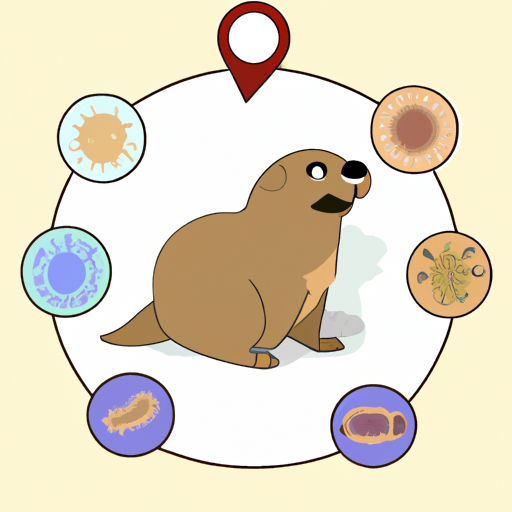Prairie dogs, those small, burrowing rodents native to the grasslands of North America, are fascinating creatures. But as a caregiver, you should be aware that they may pose a risk to your health and that of those you care for due to the diseases they carry. This article will dive into the five most common diseases prairie dogs can transmit to humans.
1. Plague
Yes, you read it right. Prairie dogs are known to carry Yersinia pestis, the bacterium that causes plague, a disease often associated with historical pandemics.
- Prairie dogs become infected by fleas that carry the bacterium.
- Humans can get infected through a bite from these infected fleas or by handling an infected animal.
| Plague Symptoms | Description |
|---|---|
| Fever and chills | The body’s response to fighting off the infection. |
| Weakness | A general feeling of being unwell. |
| Swollen lymph nodes | Often painful and can be seen in the neck, armpit, or groin. |
2. Tularemia
This bacterial disease can affect both humans and animals. Prairie dogs can become infected through tick and deer fly bites, or by contact with infected animals or their droppings.
- The bacteria enter the body through the skin, eyes, mouth, or lungs.
- Symptoms can vary depending on how you were infected.
3. Monkeypox
While it may sound exotic, monkeypox is a real concern when it comes to prairie dogs.
- The disease was transmitted to prairie dogs from imported African rodents in a 2003 outbreak.
- Symptoms in humans are similar to but milder than smallpox.
4. Bubonic Plague
Prairie dogs can also carry the bubonic plague, another form of plague caused by Yersinia pestis.
- Humans can become infected through the bite of an infected flea or by direct contact with an infected animal.
- Symptoms include sudden fever, headache, chills, and weakness.
5. Hantavirus
Hantavirus is a severe, sometimes fatal disease transmitted through the urine, droppings, or saliva of infected rodents, including prairie dogs.
- Humans can contract the virus through inhalation of aerosolized virus from rodent urine or droppings.
- Early symptoms include fatigue, fever, and muscle aches.
Frequently Asked Questions
1. Can I keep a prairie dog as a pet?
Yes, in some states it’s legal to keep a prairie dog as a pet. But remember, they can carry diseases, so it’s essential to ensure they are disease-free.
2. How can I prevent getting diseases from prairie dogs?
Avoid direct contact with prairie dogs, their droppings, and their burrows. If you have a prairie dog as a pet, get it regularly checked by a vet.
3. Are there treatments available for these diseases?
Yes, most of these diseases can be treated with antibiotics if caught early. However, prevention is always the best course of action.
4. Can these diseases be transmitted to other pets?
Yes, some of these diseases can be transmitted to other pets. Always keep your pets away from wild prairie dogs.
5. How serious are these diseases?
While some diseases are more severe than others, all can be quite serious if not treated promptly. If you suspect exposure, seek medical attention immediately.



